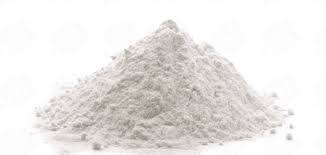
Hydroxyapatite Nano and Micron Powders: Synthesis and Applications
Hydroxyapatite (HA), a naturally occurring mineral form of calcium apatite, has garnered significant attention due to its exceptional biocompatibility, bioactivity, and resemblance to human bone mineral. Available in both nano and micron forms, hydroxyapatite powders are widely used in medical, dental, and industrial applications. This article explores the synthesis techniques, properties, and diverse applications of hydroxyapatite powders.
What is Hydroxyapatite?
Hydroxyapatite (Ca10(PO4)6(OH)2) is a calcium phosphate mineral that constitutes the primary inorganic component of human bones and teeth. It exhibits excellent osteoconductive and bioactive properties, making it an ideal material for biomedical applications.
Synthesis of Hydroxyapatite Powders
- Chemical Precipitation:
- A widely used method where calcium and phosphate precursors react in an aqueous solution to form hydroxyapatite.
- Sol-Gel Process:
- Produces highly pure and homogenous HA powders through a solution-phase reaction followed by gelation and calcination.
- Hydrothermal Method:
- Involves synthesis under high pressure and temperature, yielding well-crystallized and uniform nanoparticles.
- Spray Drying:
- Converts a liquid precursor into fine hydroxyapatite particles using a spray dryer.
- Mechano-Chemical Synthesis:
- Combines mechanical milling with chemical reactions to produce HA powders with controlled properties.
Properties of Hydroxyapatite Powders
- Biocompatibility:
- Non-toxic and compatible with human tissues.
- Osteoconductivity:
- Supports bone cell attachment and growth.
- Porosity and Surface Area:
- High surface area and porosity enhance its bioactivity and drug delivery potential.
- Chemical Stability:
- Stable under physiological conditions, ensuring durability in biomedical applications.
- Nano vs. Micron Powders:
- Nano-sized powders exhibit higher surface area and reactivity, while micron-sized powders are suitable for load-bearing applications.
Applications of Hydroxyapatite Powders
- Bone Grafts and Implants:
- HA powders are used in bone grafts, coatings for orthopedic implants, and scaffolds for tissue engineering.
- Dental Applications:
- Employed in toothpaste, dental fillings, and coatings for dental implants to promote remineralization and integration.
- Drug Delivery Systems:
- Serves as a carrier for targeted drug delivery due to its porous structure and biocompatibility.
- Cosmetics:
- Incorporated into skincare products for exfoliation and skin repair.
- Environmental Applications:
- Used in water treatment to adsorb heavy metals and remove contaminants.
- Ceramics and Coatings:
- Added to ceramics for enhanced mechanical properties and as protective coatings in biomedical devices.
- 3D Printing:
- Utilized as a bio-ink material for printing customized bone scaffolds and implants.
Advantages of Hydroxyapatite Powders
- Biocompatibility and Safety:
- Non-toxic and suitable for direct contact with biological tissues.
- Customizability:
- Properties can be tailored through doping and surface modifications.
- Versatility:
- Applicable in a wide range of biomedical and industrial applications.
- Sustainability:
- Can be synthesized from natural sources like eggshells and coral, promoting eco-friendly practices.
Challenges in Using Hydroxyapatite Powders
- Cost of Production:
- High-purity synthesis methods can be expensive.
- Mechanical Strength:
- Prone to brittleness, limiting its use in load-bearing applications without reinforcement.
- Scalability:
- Scaling up production for industrial applications remains a challenge.
- Material Handling:
- Fine powders require specialized handling to prevent agglomeration and contamination.
Future Directions
- Composite Materials:
- Developing HA composites with polymers and metals for enhanced mechanical properties.
- Advanced Drug Delivery:
- Research into functionalized HA for controlled and targeted drug release.
- Nanotechnology Integration:
- Exploring nanoscale HA for improved performance in regenerative medicine and advanced coatings.
- Green Synthesis:
- Investigating eco-friendly synthesis methods using sustainable resources.
- 3D Bioprinting:
- Expanding its use in bioprinting for creating complex tissue and organ structures.
Conclusion
Hydroxyapatite nano and micron powders are versatile materials with significant potential in biomedical, dental, and industrial applications. Their biocompatibility, bioactivity, and customizable properties make them indispensable in advancing healthcare and technology. As research continues to overcome current challenges, hydroxyapatite powders are set to play a pivotal role in shaping the future of biomaterials and nanotechnology.
